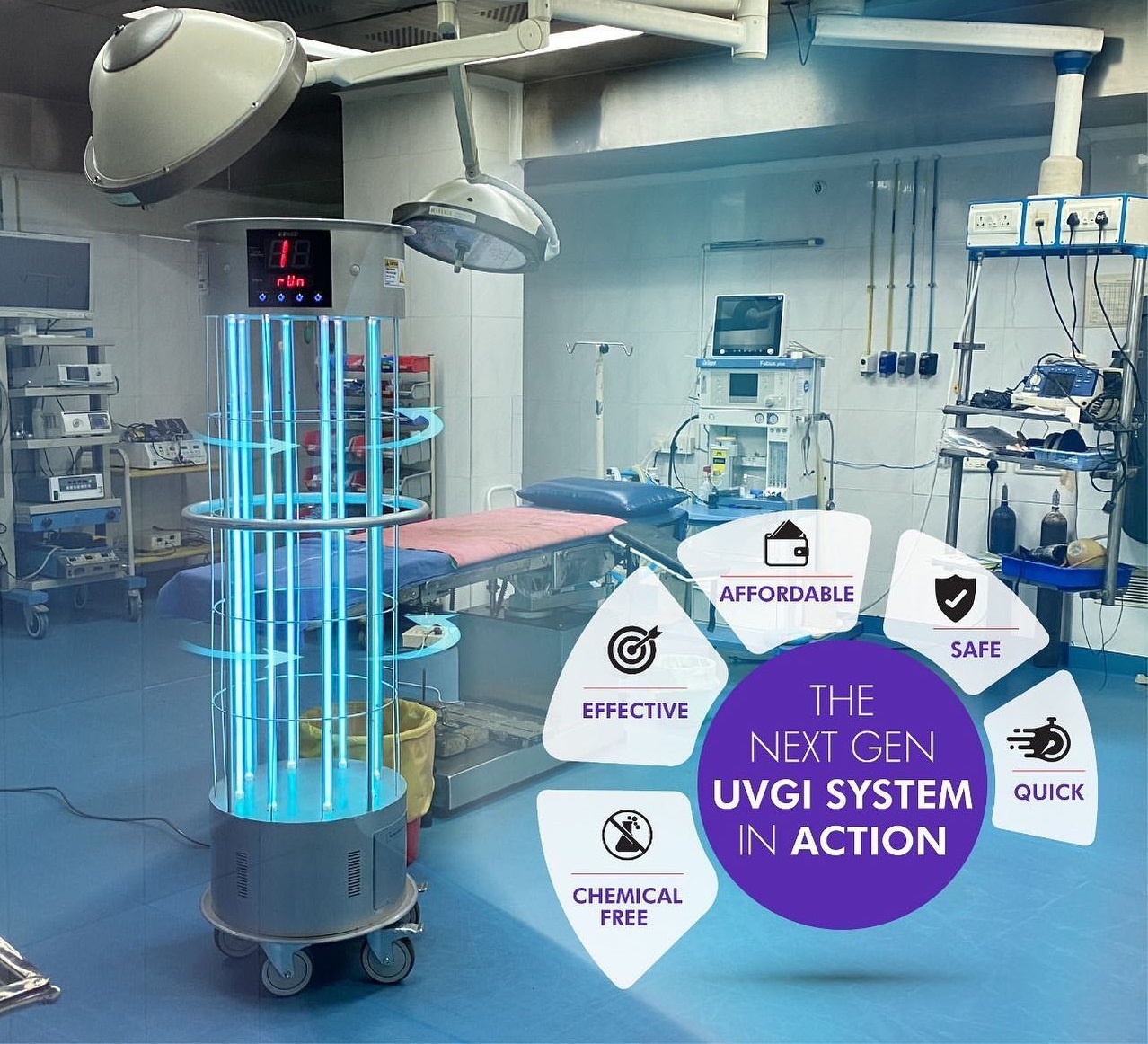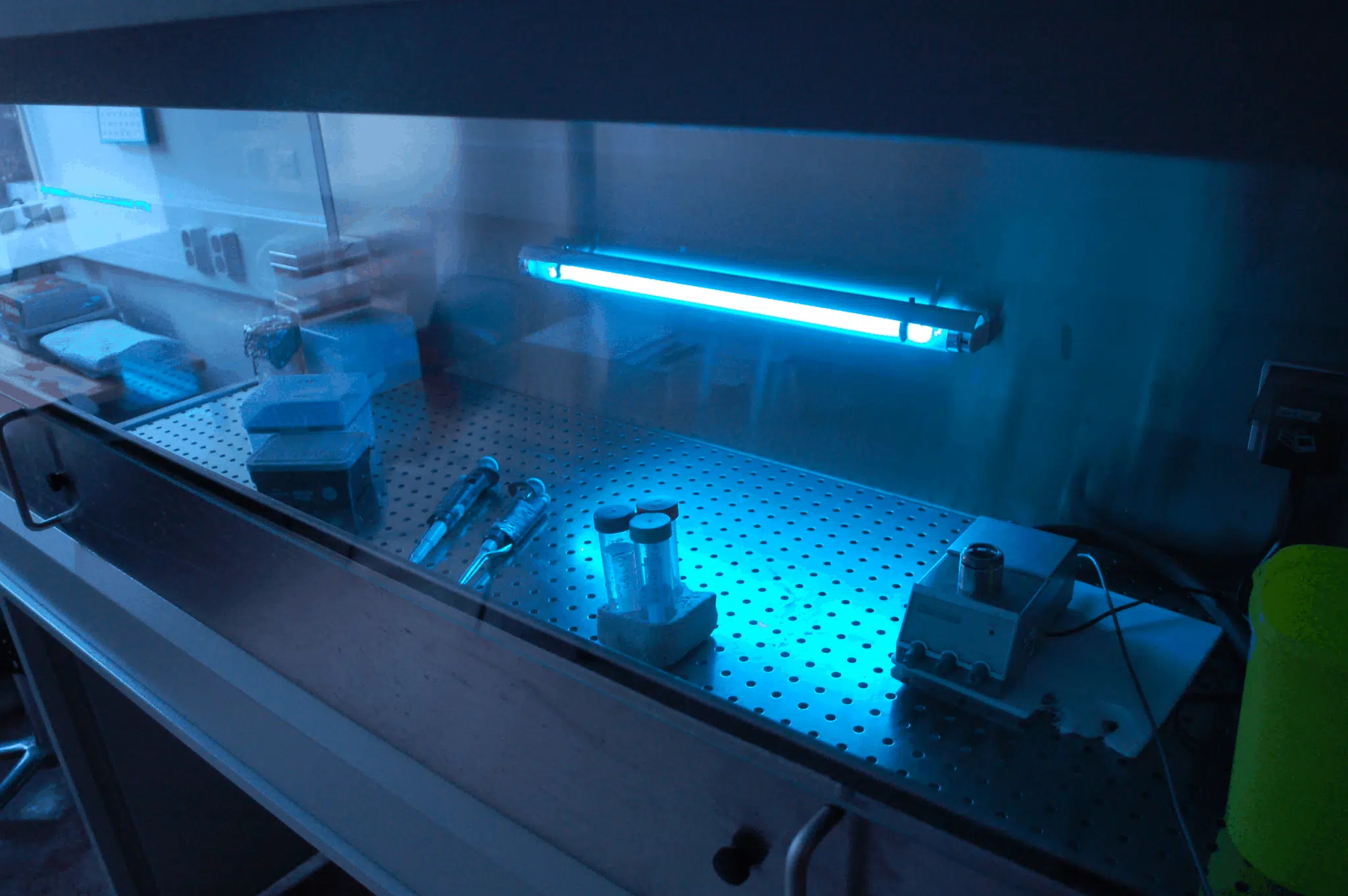Far-UVC UV Sanitizers: The Cutting-Edge Service for Effective Sanitation
Wiki Article
Far UVC Light: A Game-Changer in the Battle Against Airborne Pathogens
In the ever-evolving battle versus airborne microorganisms, the emergence of much UVC light has actually stimulated significant passion and capacity. This cutting-edge innovation, harnessing a particular series of ultraviolet light, holds the pledge of changing just how we fight the spread of dangerous microbes in different atmospheres. Its possible applications and special buildings have garnered focus from scientists, researchers, and public health experts alike. What exactly is much UVC light, and how does it function? In this conversation, we will look into the science behind this game-changing innovation, discover its benefits, and examine its future effects in the continuous battle against airborne pathogens.The Science Behind Far UVC Light
The scientific principles underlying the use of Far UVC light as a possible remedy for combating air-borne virus are both elaborate and appealing. Far UVC light refers to a specific array of ultraviolet (UV) light wavelengths, generally in between 207 and 222 nanometers, which have actually been found to efficiently kill or suspend bacteria such as viruses and germs. Unlike standard UVC light, which has a much shorter wavelength and is known for its germicidal properties but can also hurt human skin and eyes, Far UVC light has actually been revealed to be safe for human direct exposure.The essential system behind the performance of Far UVC light depend on its ability to permeate and ruin the genetic product of microbes, including their DNA and RNA. When subjected to Far UVC light, the genetic material undergoes a procedure called photodimerization, where surrounding bases in the DNA or RNA particle bind together, protecting against replication and making the microbe unable to duplicate or trigger infection.

How Far UVC Light Functions
Much UVC light operates by making use of particular ultraviolet wavelengths to properly reduce the effects of microbes and prevent their duplication, making it an encouraging service for combating airborne pathogens. Unlike conventional UVC light, which is hazardous to human skin and eyes, much UVC light has shorter wavelengths, generally in the variety of 207 to 222 nanometers (nm), that do not penetrate the outer layer of the skin or the tear layer of the eye. This makes it safe for constant human direct exposure, while still being dangerous to infections and germs.The efficiency of much UVC light hinge on its capacity to damage the dna and pass through and RNA of microbes. When revealed to far UVC light, the genetic material of these pathogens is damaged, providing them not able to replicate and contaminate cells. Additionally, researches have shown that far UVC light can properly suspend air-borne viruses, such as influenza, measles, and coronaviruses, consisting of SARS-CoV-2, the infection in charge of COVID-19.
Additionally, far UVC light is additionally efficient in sanitizing surfaces and items in an enclosed area. By mounting far UVC lights or making use of portable much UVC light devices, it is feasible to constantly disinfect the air and surface areas, reducing the threat of air-borne transmission of microorganisms.
Benefits of Far UVC Light
Using much UVC light offers a variety of significant advantages in combating airborne virus and guaranteeing a safer environment for continual human exposure. Among the essential benefits of much UVC light is its capability to effectively counteract various sorts of hazardous germs, infections, and fungi without creating injury to human beings. Unlike conventional UV light, which can be damaging to human skin and eyes, far UVC light has a shorter wavelength that enables it to target and damage microorganisms while posturing marginal threat to human wellness.
Moreover, far UVC light is much more secure for the atmosphere contrasted to traditional disinfection techniques. Chemical disinfectants often have hazardous ingredients that can have negative effects on the setting. Far UVC light, on the various other hand, does not produce any kind of dangerous results or deposits, making it an extra green and lasting solution.
Applications of Far UVC Light
One of the crucial uses for far UVC light remains in the field of air purification and sanitation. Far UVC light has actually proven click to read to be effective in eliminating air-borne microorganisms such as viruses, fungis, and microorganisms. This innovation works by producing a particular wavelength of light that is qualified of penetrating the external layers of microorganisms and damaging their DNA, making them incapable and inactive to duplicate. Unlike traditional UV light, far UVC light is safe for human direct exposure, making it ideal for continual use in public areas such as offices, colleges, and medical facilities.Another application of far UVC light is in the health care sector. It can be utilized to sanitize hospital spaces, operating movie theaters, and medical equipment, reducing the danger of healthcare-associated infections. Furthermore, much UVC light can be integrated right into cooling and heating systems to purify the air distributing in buildings, offering an included layer of protection versus airborne virus.
Additionally, much UVC light can be utilized in the food industry to stop foodborne health problems. It can be dig this employed to sanitize food processing facilities, eliminating bacteria and various other microbes that may pollute food items.
Future Effects of Far UVC Light
The prospective future applications of much UVC light are large and hold pledge for numerous industries and fields. Medical facilities and clinics could make use of far UVC light to decontaminate person spaces, operating movie theaters, and waiting areas, minimizing the danger of healthcare-associated infections.Furthermore, the usage of far UVC light in public rooms such as flight terminals, train terminals, and mall might assist control the spread of airborne virus. By constantly sanitizing these areas, the threat of official website transmission might be substantially decreased, providing a more secure atmosphere for people.
Another possible application of much UVC light is in the food industry. Much UVC light might be used to disinfect food preparation surface areas, packaging materials, and storage space locations. This might aid prevent the contamination of food and lower the incident of foodborne illnesses.
Furthermore, much UVC light could be made use of in a/c systems to disinfect the air flowing in structures. This can be especially valuable in jampacked rooms such as offices, cinemas, and colleges, where the threat of airborne transmission is greater.
Final Thought
In conclusion, far UVC light has emerged as a game-changer in the fight versus air-borne virus. Its distinct residential properties and capability to safely eliminate infections and microorganisms make it an encouraging option for numerous applications. From public rooms to medical care settings, far UVC light deals various advantages in minimizing the transmission of conditions. With additional r & d, its widespread execution can have substantial ramifications for the future of infection control.
Much UVC light refers to a specific variety of ultraviolet (UV) light wavelengths, typically between 207 and 222 nanometers, which have actually been discovered to efficiently kill or suspend bacteria such as infections and microorganisms. far-uvc. Unlike conventional UVC light, which has a much shorter wavelength and is understood for its germicidal residential properties however can likewise damage human skin and eyes, Far UVC light has actually been shown to be safe for human exposure
Unlike traditional UVC light, which is harmful to human skin and eyes, much UVC light has much shorter wavelengths, commonly in the variety of 207 to 222 nanometers (nm), that do not permeate the external layer of the skin or the tear layer of the eye. Unlike conventional UV light, which can be unsafe to human skin and eyes, much UVC light has a shorter wavelength that allows it to target and ruin pathogens while positioning very little danger to human wellness.
Unlike traditional UV light, far UVC light is safe for human exposure, making it suitable for continuous use in public spaces such as workplaces, schools, and medical facilities.
Report this wiki page